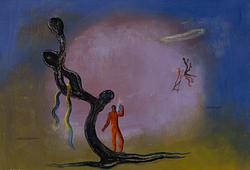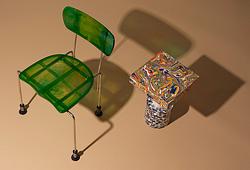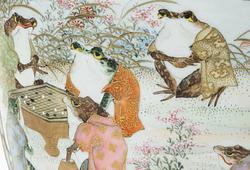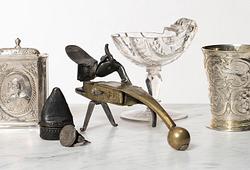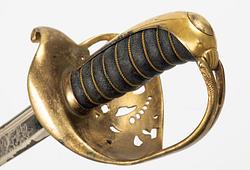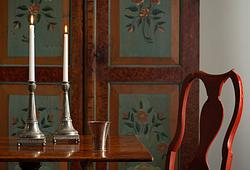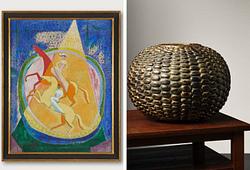Important Spring Sale presents Vu Cao Dam
A pair of platinum earrings with two old-cut diamonds
Old-cut diamonds, often referred to as "antique cuts," are prized for their vintage charm and distinct sparkle. These diamonds were hand-cut before modern cutting techniques, typically featuring a simpler, less precise shape compared to today's brilliant cuts. The history of diamond cutting dates back to the 14th century when early artisans began shaping diamonds to enhance their natural brilliance. Over the centuries, cutting techniques evolved, leading to the more intricate and precise diamond shapes we see today. Despite these advancements, old-cut diamonds remain highly valued for their unique, historical appeal and romantic character.

A Fabergé jewelled chalcedony and silver-topped gold brooch/pendant, August Hollming St Petersburg 1899 - 1908
Fabergé is a renowned Russian jewelry brand famous for its exquisite craftsmanship and luxurious designs. While best known for its Imperial Easter eggs, Fabergé also created a wide range of fine jewelry, including brooches, pendants, and rings. The pieces often featured intricate details, enamel work, and precious stones. Fabergé's jewelry was highly prized by royalty and aristocrats for its elegance, creativity, and unmatched quality. Fabergé’s ledgers refer to cabochon chalcedony stones in shades of purple-blue or mauve as “Mecca stones.” The name likely originates from Mocha, a town on Yemen’s Red Sea coast, where these stones were originally mined.

A brooch in silver and 14K gold with a step-cut emerald
Emeralds are beautiful green gemstones that have been valued for thousands of years. They are a type of mineral called beryl, and their green color comes from traces of chromium and vanadium. Emeralds are often used in jewelry and are known for their rich, deep color. The most famous emeralds come from Colombia, but they are also found in countries like Brazil and Zambia. Because of their beauty and rarity, emeralds are considered one of the most precious gemstones in the world.

This spring’s auction features a magnificent tiara in silver with old-cut and rose-cut diamonds
Various forms of head ornaments have been used for centuries. During the neoclassicism of the 19th century, the art form of tiaras flourished and reached its peak during the First French Empire. Emperor Napoleon's wife, Empress Joséphine, wore striking tiaras that became an expression of this high culture within the art of tiaras. By drawing on antiquity as a model, they took on magnificent expressions and were often part of larger sets together with, for example, earrings, bracelets, and brooches in sets known as parure. The plant kingdom has been a source of inspiration for many tiaras, with precious metals shaped into myrtle, orange blossoms, laurel, murrine, and grapevines. These could be richly set with diamonds, emeralds, various cameos, and pearls.

The jewellery will be sold at Important Spring Sale
Viewing June 5–10, Berzelii Park 1, Stockholm
Open weekdays 11–18, weekends 11–16 CET
Live auction June 1–13, Arsenalsgatan 2, Stockholm
Read more about Important Spring Sale
Requests & condition reports

Vasarahinta
420 000 SEK
Lähtöhinta
300 000 - 400 000 SEK

Vasarahinta
Ei myyty
Lähtöhinta
320 000 - 340 000 SEK

Vasarahinta
Ei myyty
Lähtöhinta
40 000 - 50 000 SEK

Vasarahinta
26 000 SEK
Lähtöhinta
25 000 - 30 000 SEK

Vasarahinta
90 000 SEK
Lähtöhinta
50 000 - 60 000 SEK
Requests & condition reports

Tukholma
Cecilia Andrén
Vastaava asiantuntija, Korut
+46 (0)790 78 03 20




